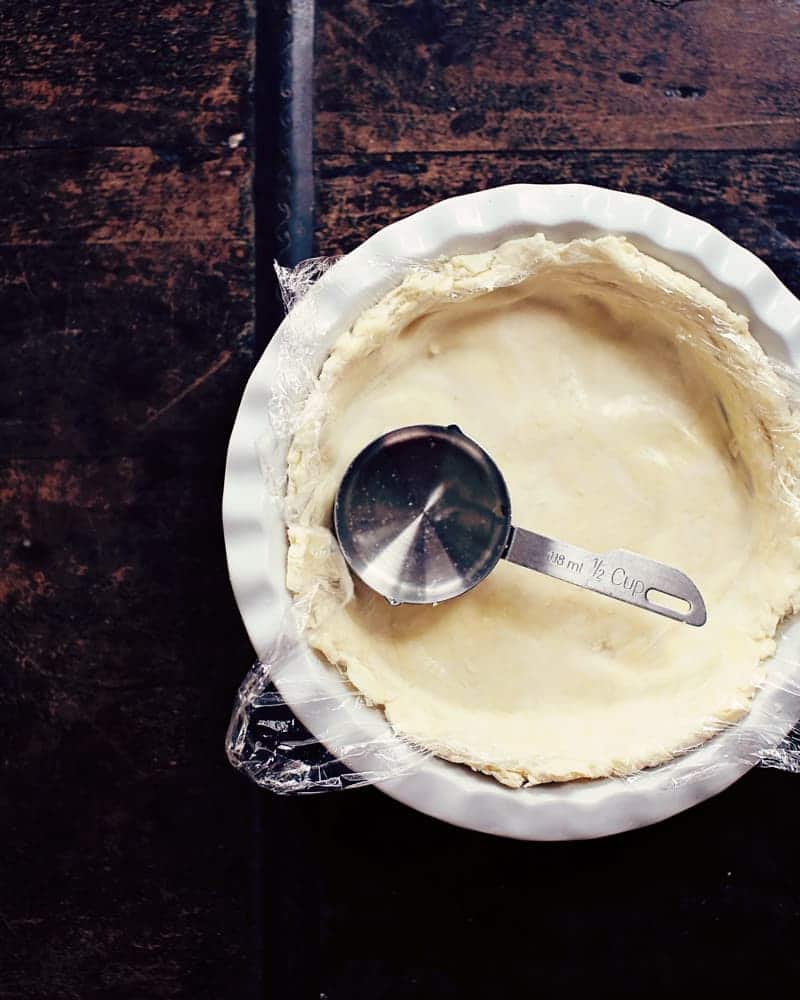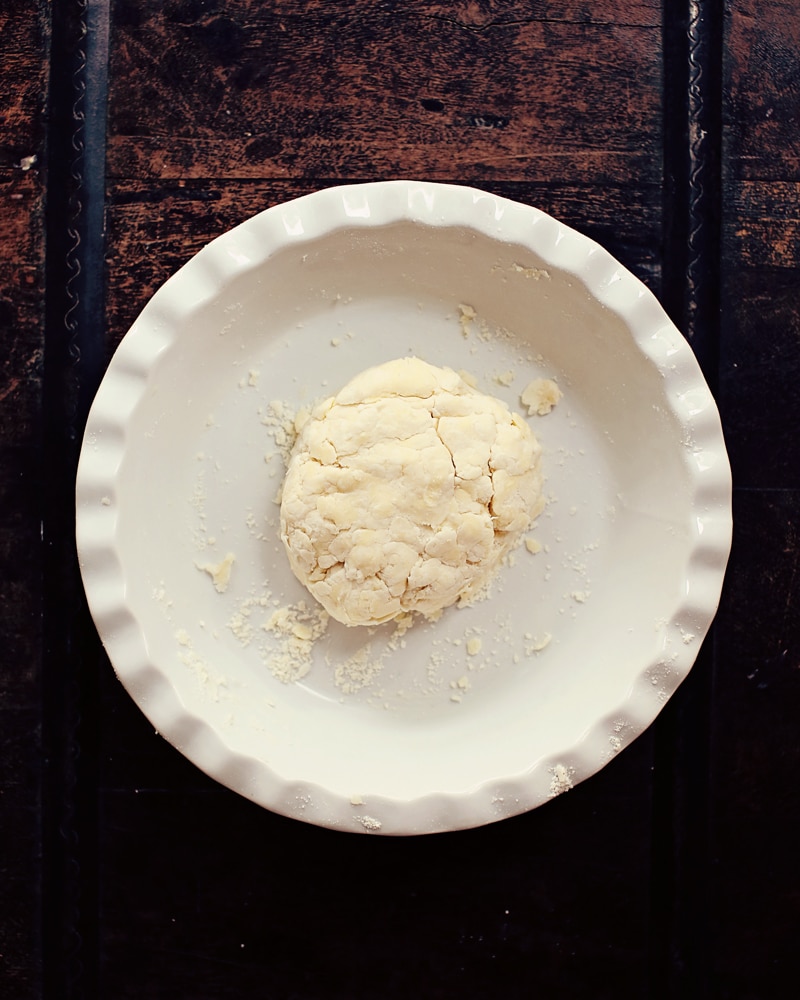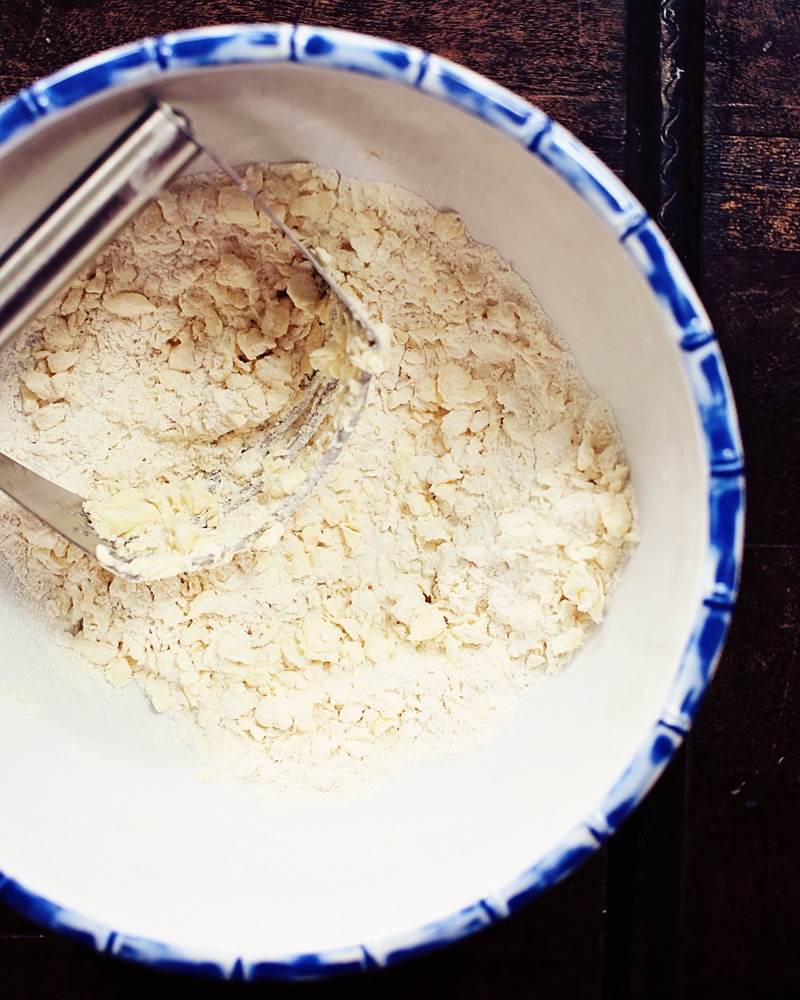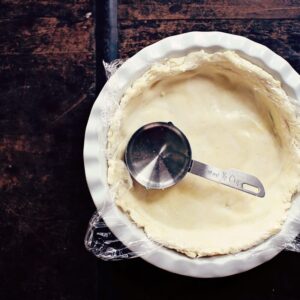Jun 15, 2023, Updated Jul 04, 2023
Why You’ll LOVE this Press-In Pie Crust Recipe
Making good homemade pie crust is a bit of a challenge. It’s not easy to make a lovely, flaky, tender pie dough that tastes amazing. Which is why I have a super easy, great-tasting press-in pastry recipe in my back pocket that I am sharing with you today. It is super quick, and eliminates the fuss of rolling out sticky dough and trying to shape and flute a crust. Just press it into the pie pan and voila! This super easy crust recipe makes it really easy to pop a pumpkin pie into the oven before the turkey dinner, without any advance planning at all.
Gather Your Ingredients for This Easy Pat In Pan Pie Crust Recipe
To whip up a fantastic no roll pie crust, you’ll need a few essential ingredients. Get ready to make lots of pies!
All Purpose Flour: This is the backbone of your pie crust, providing the basic structure and substance. Substitute gluten-free flour if you like. Salt: Salt enhances the flavor of the pie crust and balances out the sweetness of the pie filling. Butter: Salted or unsalted butter works here and provides the fat for a rich flavor and tender texture. As it melts during baking, it creates steam that results in the flaky layers we love in pie crust. It tastes so much better than shortening. I much prefer the cold butter recipe over the melted butter or vegetable oil version of press-in pie crust. Ice Water: Ice water binds the dough together without activating too much gluten, which could make your crust tough. The cold temperature also helps keep the butter from melting before the pie goes into the oven, aiding in achieving a flaky texture.
How to Make Easy No-Roll Pie Crust From Scratch
Whether you’re a baking novice or simply short on time, this guide will walk you through the easy steps of making a pie crust that’s delightfully flaky and ready for your favorite filling – whether that’s rhubarb strawberry pie or cute savory muffin tin mini quiches for the kids.
Prepare Your Ingredients: Start by measuring out your ingredients. You’ll need flour, salt, cold cubed butter, and ice water. Combine Dry Ingredients: In a large bowl, whisk together the flour and salt. Cut in the Butter Cubes: Use a pastry cutter or your fingers to cut the butter into the flour mixture. You want to end up with butter pieces that are between the size of lentils and peas (not tiny crumbs). This will create the flaky texture in your finished crust. You can alternatively use a food processor. Add the Ice Water: Sprinkle the cold water over the flour and butter mixture. Stir with a fork until just combined. The dough will look shaggy at this point, but that’s okay. Press the Dough into the Pie Dish: Transfer the dough to your pie plate and press it into the bottom and up the sides of the dish. Aim for an even thickness throughout. Cover the pie plate with plastic wrap and chill for 30 minutes in the fridge. Final Shaping and Freezing: Still loosely covering the dough with plastic wrap, use a flat-bottomed measuring cup or a glass to further press and shape the pastry into the pie plate. Use your fingers (still on top of the plastic wrap) to draw the pastry up the sides a bit more. Remove the plastic wrap and freeze the crust for 10 minutes before filling and baking according to your pie recipe.
You see, the butter pieces melt in the dough and create layers (yielding flakiness) but they also create pockets of steam – the steam makes the dough rise a bit, giving it lift. If the butter pieces are too small, then you won’t get the same pockets of steam, and you’ll have a buttery, crunchy crust. Even if that happens for you, it’ll still be delicious, I promise, so don’t fret too much.
Pro Tips & Tricks
No rolling pin required!
Use Cold Butter and Ice Water: Cold ingredients are the key to a flaky pie crust. The cold butter creates pockets when it melts in the oven, leading to a flaky texture. The ice water helps keep everything cold and also helps to bind the dough without activating too much gluten, which can make the crust tough. Don’t Overwork the Dough: When mixing the butter into the flour and adding the ice water, work quickly and try not to overmix. You want to maintain those chunks of butter for the best texture. Press Evenly: When pressing the dough into your pie plate, aim for an even thickness throughout. This ensures even baking and a uniformly cooked crust. The bottom of a measuring cup or glass can help achieve this. Chill and Freeze the Dough: Chilling the dough in the refrigerator helps the fat solidify, leading to a flakier crust when baked. Additionally, freezing the formed crust for a short time before baking can help it maintain its shape in the oven. Use Pie Weights For Blind Baking: If your recipe requires pre-baking or “blind baking” the crust, use pie weights or dried beans on top of a piece of parchment paper to prevent the crust from puffing up in the oven. Bake in the Bottom: Bake the pie in the bottom third of the oven, starting at high heat, and on top of a preheated baking stone or baking sheet. These tricks help ensure a nicely cooked, never soggy bottom.
This pie crust will be homey, and the pastry won’t come up over the rim of the pie plate. If you want to have fancy fluting, use a regular crust that you roll out on the counter. See how it looks baked in a (super-easy) pumpkin pie with fall spices.



